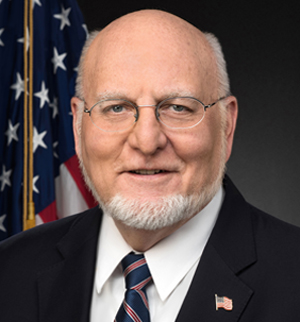Dr. Robert Redfield: In His Own Words

Research!America hosted an alliance member call for members and partners on April 13, 2020 with Dr. Robert Redfield, Director, Centers for Disease Control and Prevention. Dr. Redfield opened with an overview of the COVID-19 pandemic and the CDC’s response. He stressed that COVID-19 is the greatest public health challenge the United States has faced in over a century and highlighted the CDC’s deployment of personnel, development and expansion of serology testing, and distribution of funding to state, local, and tribal public health departments. He also emphasized that our nation should use this time to expand the existing public health infrastructure in order to be better prepared for future public health challenges. Here are some notable comments that he made during the conversation:
On Current Status:
“I’m personally inspired by the American people, who are great in embracing the president’s guidelines, slowing the spread of the chronic virus, practicing social distancing and protecting the lives of the most vulnerable.”
“We are learning more about this virus each day. But one thing is clear: this virus doesn’t know boundaries.”
“We’re actively engaged with the White House task force presenting the science, data and expertise for policy making. More than a dozen of the CDC’s leading experts are actually in the FEMA National Response Coordinating Center, meeting in different areas in the overall national response.”
“I just want to underscore that our number one priority continues to be at CDC with the health and safety of the American people. This is the largest, most serious health crisis that has hit this nation in more than a hundred years.”
“We have to embrace the importance of social distancing.”
“It’s important for us, I think, to be humble about what we think we know and what we have data to actually know.
“I think this is an all-of-the-nation response, not just an all-government response.”
On Present Action:
“We’re going to continue at CDC to rely on data science to determine the most appropriate public health measures to lead us out of this outbreak and to communicate those effectively to the policymakers.”
“We’re continuing to do a lot to expand our understanding of this virus. [We’re] standing up large serial prevalence surveys that we’ll be able to [use to] characterize the extent of the virus’s infection across the nation, get us a better understanding of the relationship between symptomatic and asymptomatic infection, and get a much more accurate understanding of the overall mortality of this particular pathogen.”
“We continue to conduct a deep analysis of the hotspots. As you watched the transition to different parts of our nation over the past twelve weeks, we are continuing to put out a number of scientific articles to share what we’ve learned, particularly about community transmission, hospitalization rates, etc.”
“Now is the time to get it done. Secure this, and we need the long term resources to build a robust public health capacity for our entire nation and for our entire nation’s needs. Our country deserves it, both here and abroad.”
On Innovation:
“I look forward to the innovation that we’re going to see from many of your [Research!America’s] members to improve the tools we have for diagnosis, treatment and prevention.”
“ The biggest thing I have to make sure is we don’t think too small. [Public health people]: think big. You’re creating a public health system for the year 2050 and beyond. And we need to start doing that tomorrow.”
“I’ve had the opportunity to meet with the president and the leaders of the pharmaceutical and biotech industry, and they’ve really responded. We need that innovation. Same thing with vaccination.”
“I came up in the AIDS epidemic where most of my patients died before they saw their 30th birthday. I’ve seen firsthand what the private sector can do with innovation. We need to accelerate that.”
On Looking Forward:
“It’s my sincere hope that the lessons that we’ve learned will keep us better prepared as a nation for future pandemics. This will require substantial, sustained investment across our country’s entire public health infrastructure.”
“We need to make sure we have a reserve fund that’s robust enough to respond and we need to take this time to really solidify the infrastructure . . .”
“I . . . will continue to make the argument that one of the most important infrastructures that we need to invest in is the infrastructure of our public health . . . for this nation. I really do think this is the time to . . . make a serious commitment, and then get it into the base budget.”
“…what do we need to build the most robust public health system in this nation that once it’s built, and once it helps us get through this pandemic, we can use that same capacity to have more meaningful improvements in public health, maternal child mortality, diabetes and tobacco use and abuse, and in getting the American public to embrace vaccines with confidence. I think this is the time, and I plan to use every ounce of energy that I have to try to see that that happens.”
“We need to have people working on solutions that also are going to work in resource limited ways, resource poor areas with the same urgency that we’re looking for efforts that are going to work for our parents, my children’s grandparents . . .”
“There’s no doubt we’re going to get through it. There’s no doubt we’re going to learn a lot of lessons. But I am 100 percent confident when we get to the other side, we’re going to be so much stronger.”
“We will be building a public health system that our grandchildren can be proud of.”
Robert R. Redfield, MD, is the 18th Director of the Centers for Disease Control and Prevention and Administrator of the Agency for Toxic Substances and Disease Registry.




